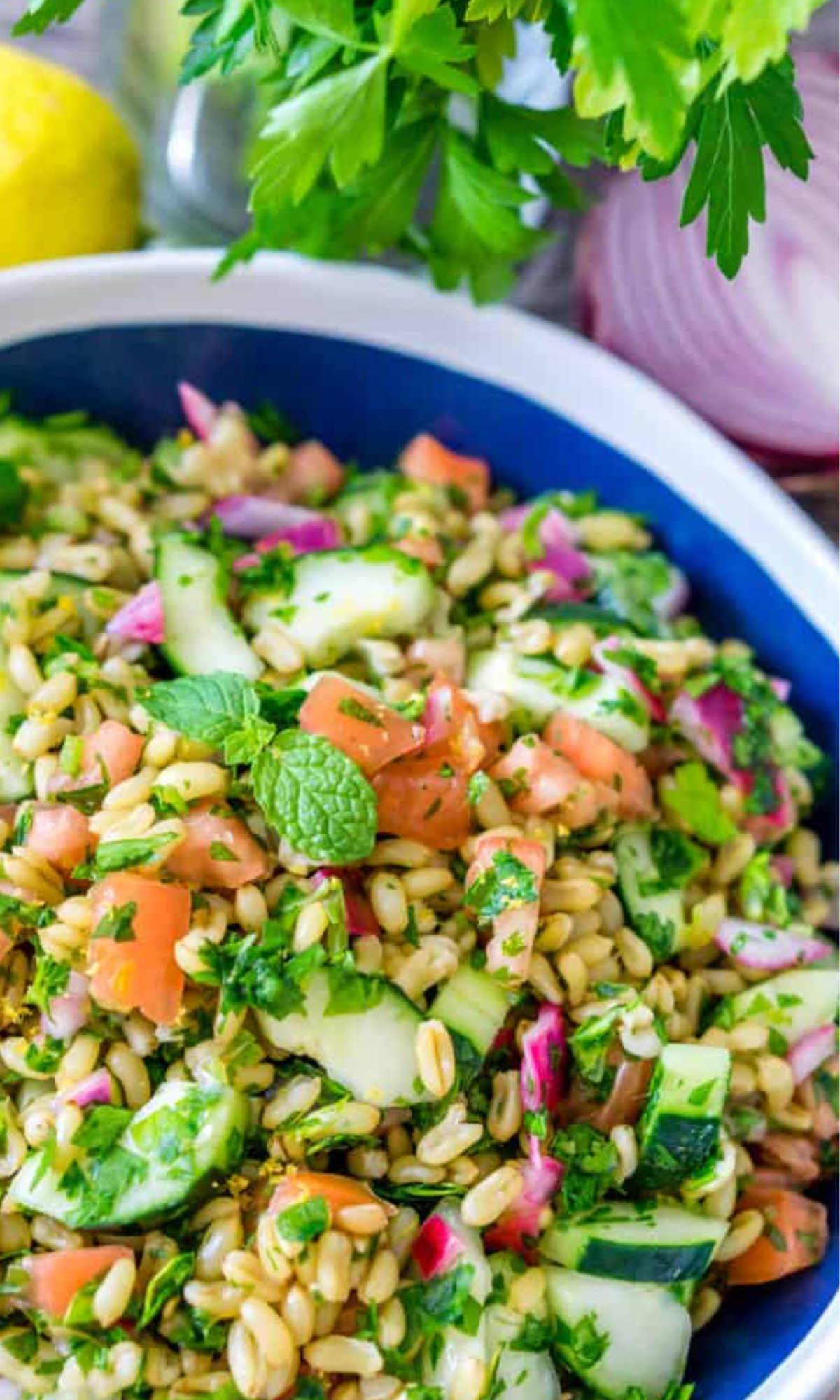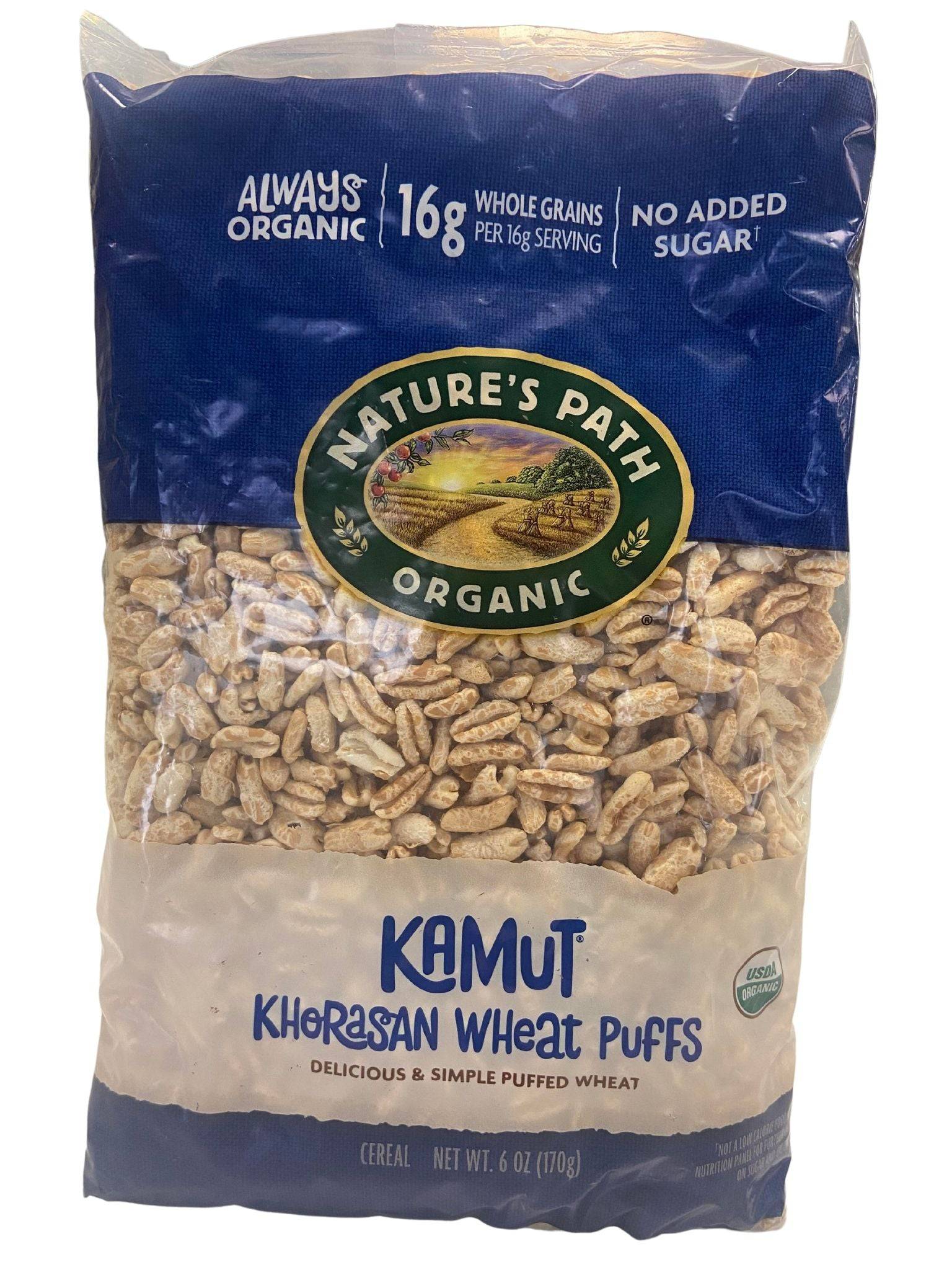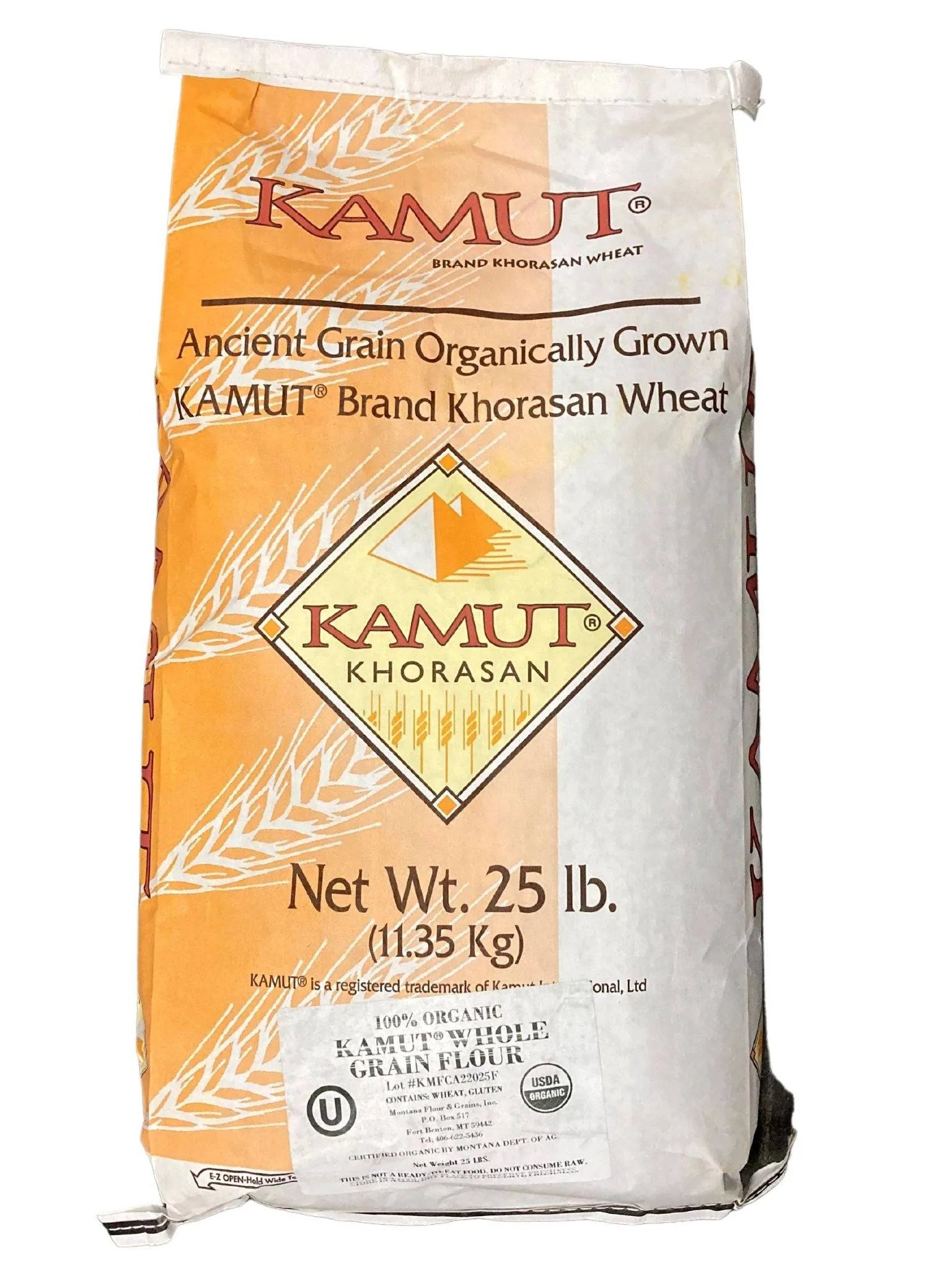KAMUT - A POWERFUL ANCIENT GRAIN
Discover what Kamut is, its health benefits, nutritional value, how to prepare and cook Kamut, and which dishes to use it in.
Ancient grains have caused quite a buzz over the past few years and gained popularity due to their untouched nature compared to processed wheat grains.
The Whole Grains Council defines ancient grains like quinoa, teff, bulgur, farro, and Kamut as those that have been primarily unchanged or altered for several years—making them excellent choices for a more wholesome diet.
And Kamut (pronounced Kuh-moot) is no exception, providing many nutritional benefits. Its nutty flavor and versatile profile make it an excellent alternative to whole grains in many dishes.
WHAT IS KAMUT?
Kamut, also known as Khorasan wheat, the Pharaoh's grain or King Tut's wheat, has been eaten in Middle Eastern regions like Iran and Europe for centuries.
In the 20th century, a Montana farmer cultivated Kamut, which slowly grew into the trusted Kamut® brand as it is known today. Kamut® is the only brand that guarantees the purity of this ancient grain.
Kamut® is guaranteed to be non-GMO, never hybridized, certified organic, and surpasses other grains regarding the protein and fiber content and its vitamins, minerals, and antioxidant profile.
The Kamut kernel is almost twice the size of common wheat, with a creamier, nuttier, and richer taste. The grains are brown and long and come in various forms, including green Kamut, whole grains, couscous, and flour.
-v1673287515949.png?2000x1333)
KAMUT'S NUTRITIONAL VALUES
-v1673287843292.png?1200x2000)
Kamut's rich nutritional profile offers about 20-40% more protein and higher fiber content than other wheat products. It also contains eight essential amino acids, making it almost a complete protein and an excellent plant-based protein source.
100 gram of cooked Kamut contains:
Energy: 132 kcal
Fat: 0.83 g
Protein: 5.71 g
Carbohydrate: 27.6 g
Fibre: 4.3 g
Calcium: 9 mg
Iron: 1.76 mg
Magnesium: 48 mg
Phosphorus: 147 mg
Potassium: 164 mg
Manganese: 1.03 mg
Zinc: 1.84 mg
Niacin: 2.3 mg
Kamut contains essential A, B, and E vitamins, fatty acids, and folate - all crucial for immune support and for the body to function optimally.
Although it is high in calories and carbohydrates, the carbs are complex with a lower Glycemic Index as it is whole grain. Low GI carbs and food assist the body in regulating blood sugar levels and help you to stay fuller for longer.
Kamut contains gluten, which isn't ideal for those with gluten sensitivities or celiac disease; however, many find Kamut to be more digestible.
A few studies suggested those with only gluten sensitivities but not celiac can digest this ancient grain without irritation or inflammation.
KAMUT HEALTH BENEFITS
Ensures for healthy bones
------Kamut is rich in manganese and contains protein, calcium, magnesium, phosphorus, vitamin D, and potassium, which all promote healthy, strong bone development and metabolism.
Manganese is essential for bone development, maintaining strong, healthy bones, and preventing the early onset of osteoporosis. A manganese deficiency can cause hypercholesterolemia and bone demineralization, and it can also lead to reduced growth in children.
REDUCES THE RISK OF CHRONIC DISEASES
------Kamut can help to lower your risk of high blood cholesterol, diabetes, obesity, stroke, and heart disease.
Its robust nutrient profile and high fiber content fight chronic inflammation, suppress hormones that cause inflammation and reduce blood sugar levels - all of which are significant causes of chronic diseases.
AIDS WEIGHT LOSS
------Fiber slows digestion speed, making you feel fuller and more satiated for longer. A study published in the Journal of Nutrition found that Dietary fiber intake, independently of macronutrient and caloric intake, promotes weight loss and dietary adherence in overweight adults.
The high protein content in Kamut is also beneficial for weight management as the digestion and metabolism of proteins help burn calories, reduce fat, build muscle, and prevent metabolic slowdown.
IMPROVES THE DIGESTIVE SYSTEM
------This ancient grain can assist with bowel movement and maintaining a healthy digestive system thanks to its high fiber content. Studies also indicate that a fiber-rich diet can reduce the risk of colorectal cancer by 10%.
The zinc in Kamut aids digestion and a Zinc deficiency is often associated with digestive problems. Iron can help your healthy gut bacteria to grow, vitamin D supports digestion, and selenium protects the lining of your gut.
ANTIOXIDANT AND ANTI-INFLAMMATORY PROPERTIES
------Studies have suggested that grains, including Kamut, einkorn, and emmer, contain higher amounts of lutein than modern white bread wheat.
Lutein is a carotenoid (a chemical compound found primarily in plant foods) with antioxidant and anti-inflammatory properties, which protect the body against several chronic illnesses.
Carotenoids are also crucial in protecting retinal tissue from light damage and reducing the risk of age-related macular degeneration.
HELP TO REGULATE HORMONES
------High selenium and manganese levels in Kamut act as antioxidants that protect the body from free radicals, genetic mutations, and cell membrane damage.
Selenium helps with reproduction, DNA production, and thyroid hormone synthesis, and manganese is crucial in processing sex hormones.
Zinc also assists in the proper functioning of the reproductive system for both genders as it regulates growth hormones.
LIVER DETOXIFICATION
------Kamut is an excellent source of phosphorus essential for kidney function and eliminating toxins from your body.
Electrolytes such as phosphorus, magnesium, and potassium are necessary to balance the body's uric acid, sodium, water, and fat.
IMPROVES BRAIN HEALTH
------Kamut contains niacin (vitamin B-3) and manganese, which are necessary to produce several endocrine hormones, improve cognitive function, and support the nervous system's health.
Your brain requires niacin to get energy and function properly, and it also protects brain cells from stress and injury. Niacin deficiency can lead to memory loss and dementia.
HOW TO COOK AND USE KAMUT
Kamut is very similar to wheat and can be used interchangeably in most recipes without altering the flavor. Enjoy Kamut in the following ways:
- As a hearty side dish on its own.
- For bulking up soups and stews.
- Tossed with salads to increase the fiber and protein content.
- Substitute your breakfast oatmeal with Kamut grains and add fruits, nuts, and other toppings for a filling breakfast bowl.
- Make a porridge out of Kamut grains by blending them in your food processor. Here is a delicious quick recipe.
- Use in baked goods, bread, pasta, waffles, and pancakes as an equal baking substitution for whole wheat or white flour for a boost of heartiness and a slightly nuttier and chewier texture.
If you are making bread or pasta with Kamut flour, you may need more liquid than you would when using standard wholemeal bread flour.
How to cook Kamut:
The Kamut berry is hard, so cooking it takes some time.
- Soak the berries overnight to reduce the cooking time.
- After soaking, add the Kamut to a pot with boiling water and a dash of salt.
- Bring to a boil, reduce the heat and cook uncovered for 40 to 60 minutes until soft.
- Discard the extra water and serve as preferred.
*Image from Babaganosh











